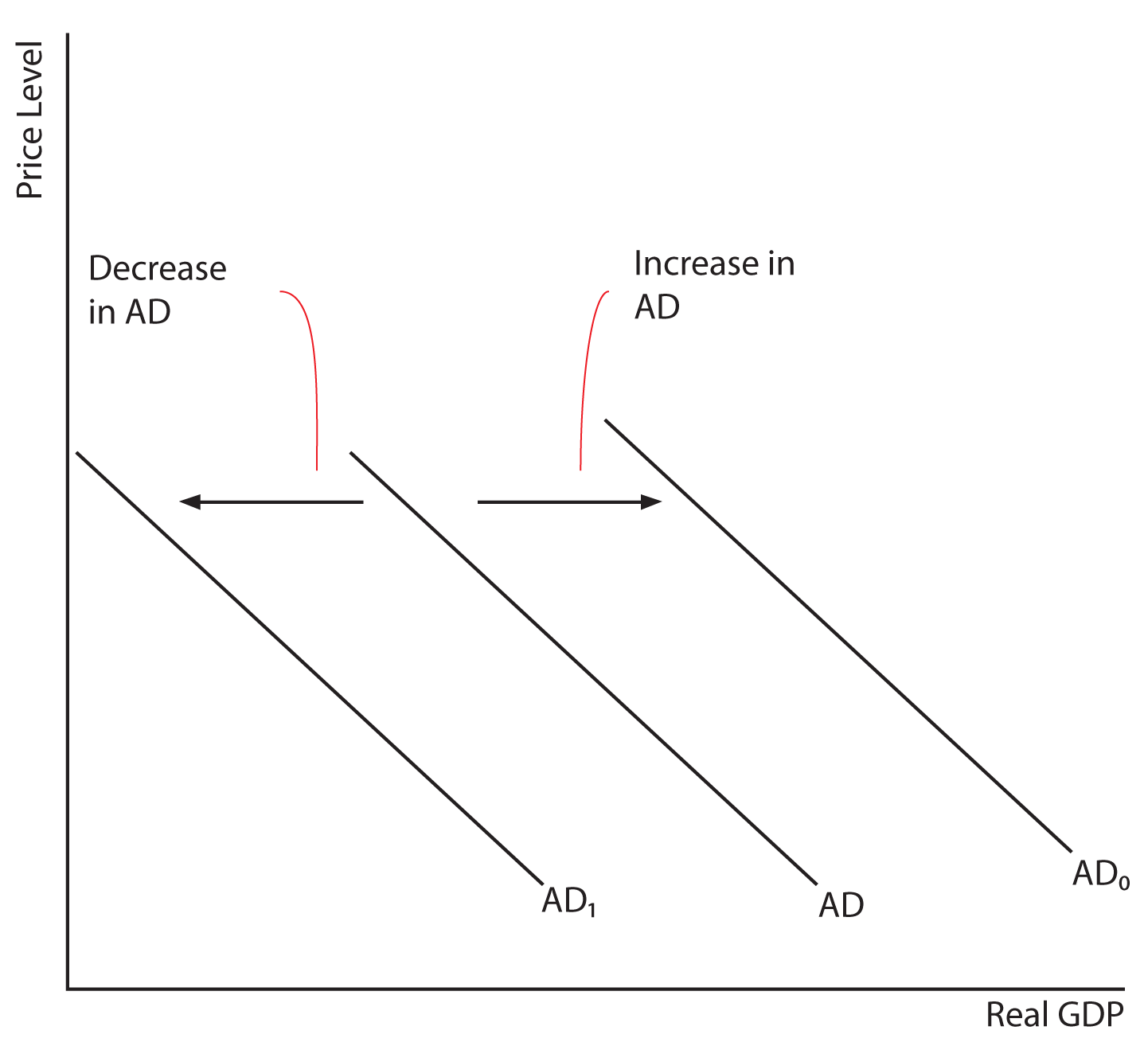Unit 3
Shifters of Aggregate Demand
- There are two parts to a shift in AD:
- A change in C, Ig, G and/or Xn
- A multiplier effect than produces a greater change than the original change is the 4 components.
- Increases in AD = AD →
- Decreases in AD = AD ←
Determinants in AD
- Consumption
- Household spending is affected by:
- Consumer wealth
- More wealth = more spending (AD shifts →)
- Less wealth = less spending (AD shifts ←)
- Consumer expectations
- Positive expectation = more spending (AD shifts →)
- Negative expectation = less spending (AD shifts ←)
- Household indebtedness
- Less debt = more spending (AD shifts →)
- more debt = less spending (AD shifts ←)
- Taxes
- Less taxes = more spending (AD shifts →)
- More taxes = less spending (AD shifts ←)
- Gross Private Investment
- Investment Spending is sensitive to:
- The Real Interest Rate
- Lower Real Interest Rate = More Investment (AD →)
- Higher Real Interest Rate = Less Investment (AD ←)
- Expected Returns
- Higher Expected Returns = More Investment (AD →)
- Lower Expected Returns = Less Investment (AD ←)
- Expected Returns are influenced by
- Expectations of future profitability
- Technology
- Degree of Excess Capability (Existing Stock of Capital)
- Business taxes
- Government Spendings
- More Government Spending (AD →)
- Less Government Spending (AD ←)
- Net Exports
- Net Exports are sensitive to:
- Exchange Rates (International value of money)
- Strong $ = More Imports and Fewer Exports = (AD ←)
- Weak $ = Less Imports and More Exports = (AD →)
- Relative Income
- Strong Foreign Economies = More Exports = (AD →)
- Weak Foreign Economies = Less Exports = (AD ←)

No comments:
Post a Comment